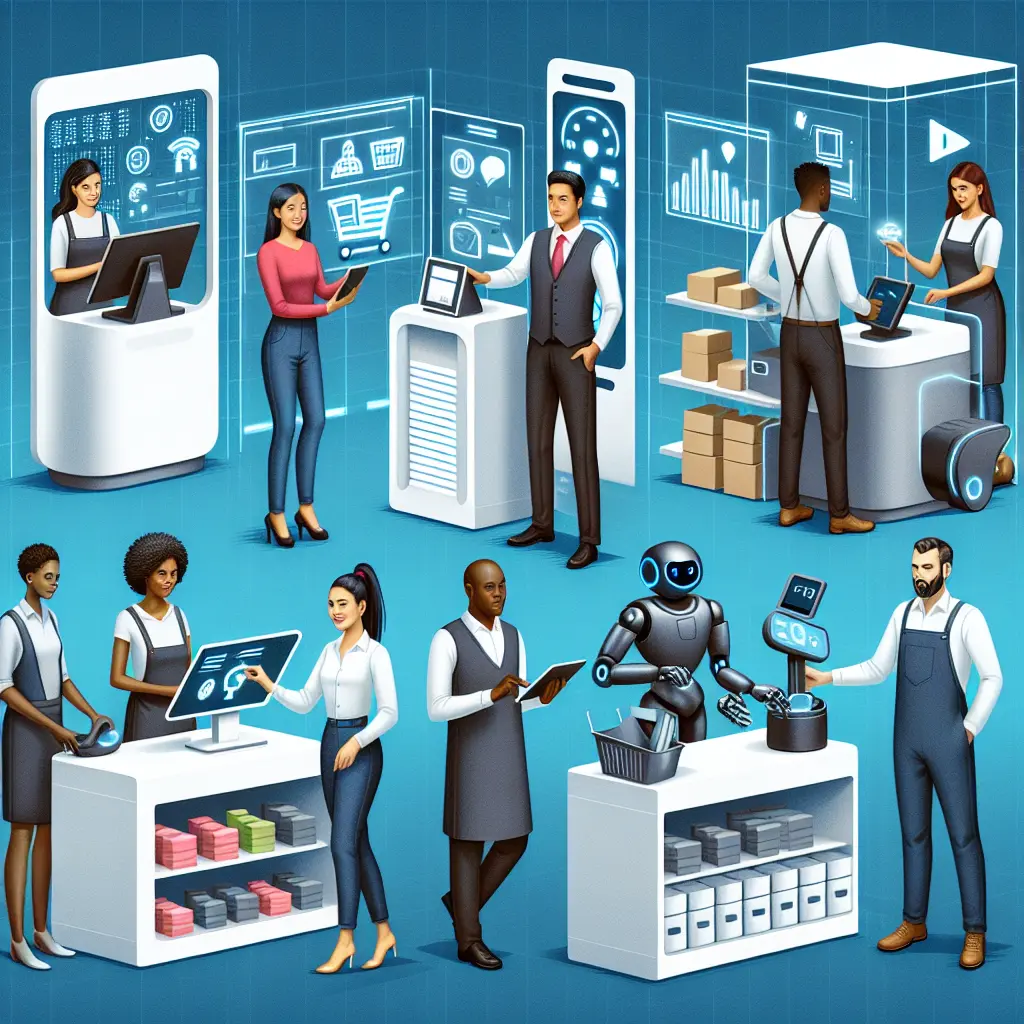
As one of the largest retailers in the world, Walmart continues to lead the charge in the adoption of emerging technologies within retail operations. Their relentless pursuit of innovation is not only enhancing customer experience but also streamlining their supply chain, optimizing their ecommerce platforms, and setting new standards in retail technology trends. Here, we explore how Walmart is integrating advanced technologies into every facet of its business model.
Walmart's Embrace of AI and Machine Learning
Walmart's technology adoption is most evident in its use of artificial intelligence (AI) and machine learning. These technologies are at the forefront of Walmart's strategy to predict customer purchasing behavior, manage inventory, and personalize shopping experiences. Walmart AI use includes chatbots in customer service applications and AI to optimize the routing of delivery trucks in real-time.
Furthermore, Walmart machine learning algorithms improve demand forecasting, which is crucial for maintaining the balance between supply and demand, thus reducing waste and increasing efficiency. This application not only supports Walmart's bottom line but also contributes to environmental sustainability.
Revolutionizing Retail with Blockchain and IoT
Walmart blockchain technology has been a game-changer for its supply chain transparency. By implementing blockchain, Walmart can trace the origin of goods, thereby ensuring freshness, authenticity, and compliance with safety standards. This traceability is particularly important in handling recalls and in preventing contamination issues.
On the other hand, Walmart IoT in retail has enabled more connected and intelligent systems across its stores. IoT sensors monitor product temperatures, track product movements, and manage energy use in buildings, ensuring operational efficiency and cost savings.
Enhancing Customer Experience Through Technology
In the realm of enhancing customer interactions, Walmart customer experience technology focuses on reducing friction and enriching touchpoints across its stores and online platforms. From mobile apps that streamline in-store shopping to advanced checkout solutions that reduce waiting times, Walmart is focused on creating seamless customer journeys.
For instance, during times when groceries have become expensive, Walmart has leveraged technology to offer budget-friendly solutions and personalized promotions that help customers save money, as discussed in various financial advisories on consumer savings.
Pioneering Automation in Retail
Walmart automation in retail extends beyond basic robotic tasks. Robots are used for cleaning floors, sorting inventory, and even filling online grocery orders. This automation not only speeds up operations but also allows human employees to focus on customer service and other critical tasks, thus optimizing workforce management.
Data Analytics: Understanding the Consumer
At the heart of Walmart's digital transformation is its sophisticated use of data analytics. With millions of transactions every day, Walmart leverages big data to gain insights into consumer behavior, product performance, and market trends. This data-driven approach informs business decisions, enhances stock management, and delivers personalized marketing directly to consumers.
Staying Ahead in Ecommerce
The surge in online shopping has pushed Walmart to continuously innovate its ecommerce technology. Walmart ecommerce technology is designed to handle a massive volume of online orders efficiently and reliably. Features like real-time inventory updates, user-friendly website interfaces, and advanced logistics systems ensure that Walmart stays competitive in the digital retail space.
The Future of Tech-Driven Retail
As retail technology trends evolve, so does Walmart. The company is already experimenting with emerging technologies like augmented reality (AR) for virtual try-ons and drone delivery systems for faster last-mile delivery. These innovations are part of a broader strategy to keep pace with consumer expectations and emerging technological capabilities.
Recent financial analyses reveal that companies like Walmart, which invest heavily in technology and innovation, are positioned for substantial growth. Reports suggest that such blue-chip stocks could potentially offer 100% returns over the next 24 months due to robust technological foundations and market adaptability.
Conclusion
Walmart's journey of digital transformation showcases its commitment to leveraging emerging technologies to improve every aspect of its retail operations—from supply chain logistics to customer interaction and beyond. As it continues to implement AI, blockchain, IoT, and automation, Walmart not only enhances its operational efficiencies but also sets new standards for the retail industry at large.
Walmart's strategic focus on technology adoption positions it as a leader not just in retail but also in technological innovation. It remains a compelling case study for other retailers aiming to navigate the challenges of the modern economic landscape while staying ahead in a tech-driven world.
With a keen eye on the future and a firm grip on innovative solutions, Walmart is truly redefining what it means to be a leader in today’s digital era.
Isla Robbins